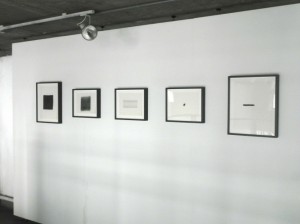“I find beauty in the foundations of math and physics, the formal systems that distill amazingly complex phenomena down to a basic set of rules. These systems, with their rote instructions, are elegantly captured by machines, which epitomize process itself. I employ microchips—simple computers—that I program to create electronic sound by sending on and off pulses of electricity directly to audio speakers, or to create video patterns by controlling the cathode ray tube of a television with direct pulses of electricity, or a drawing machine by translating on and off pulses into delicate steps of a pen.” — Tristan Perich
Tristan Perich writes music in 1s and 0s. His is an art determined by the binary on/off logic of the computer, an art in search of foundational laws. He is interested in processes, scripts, and scores: cyclical and infinite sets of rules that illuminate the possibilities and limitations of the knowable world.
He began his musical career playing piano and composing music for classical instruments, initially eschewing electronic sound as too intangible, abstract and alienated from the physical intensity of performing. It was only when he started soldering and programming microchips that he found something analogous to the “beautiful, physical sounds like when you draw a bow across a violin string,” as he said in Wednesday’s lecture. For Perich, the microchips restored a materiality to electronic sound, through both the artifact of the chip itself and the very real physical phenomena of the flow of electricity through space.


With the microchip, Perich explores the “intersection of the physical world around us and the abstract world of computation and electronics.” His 1-Bit Symphony contained an entire 40-minute, five-movement symphony on a minuscule 8-KB chip, and his compositions often feature traditional instruments alongside such raw machinery. In his work, the microchip assumes the agency of a human performer, creating sounds in real time rather than playing them back as recordings.
Perich, a purist, has stripped computation down to its most simple form, disposing of the complex, and often obfuscatory, apparatus surrounding it. There is no software or user-friendly interface here. He aims for transparency in a world where computers have become mystical objects, driven by a language (code) in which most users are illiterate, and manually assembled by laborers in far off countries. To achieve this, “you really have to build everything from the ground up,” he said of his work, “for the most part, you’re working with just raw computation on a hardware level.” It’s telling that the 1-Bit Symphony is enshrined in a literally transparent jewel case, the simple aesthetics of the circuitry itself laid bare, ready to be plugged directly into a set of headphones. It strives to make pure computation into something sonic and tangible, as direct and unmediated as possible.
